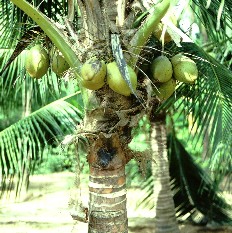Biofuels Will Make China, India More Thirsty: Andy Mukherjee
By Andy Mukherjee
Feb. 8 (Bloomberg) -- If water were a globally traded commodity, with
unmet demand in China and India reflected in its price, the world might
shed its newfound craze for biofuels.
It is bad enough that some of us need ethanol distilled in Scotland to
lubricate our evenings.
Growing corn to make ethanol to run sport-utility vehicles is downright
silly; nowhere more so than in China and India.
As many as 400 Chinese cities are facing water shortages; farmers in the
most-populous nation are forgoing millions of tons of grain production
every year. Per-capita availability of water is expected to shrink to
alarming levels by 2030.
How serious is the shortage?
``The only thing that worries me about the China story is the water
problem,'' commodities investor Jim Rogers, chairman of Beeland
Interests Inc. in New York and a fan of China, said this week at a press
conference in Melbourne.
``If China cannot solve the water problem, that could be the end of the
story,'' said Rogers, who co-founded Quantum Fund with George Soros and
then went biking around the world.
Amid this water scarcity, China has gone on to become the world's
third-largest bio-ethanol producer after Brazil and the U.S., pouring
thousands of gallons of water to grow a ton of corn, and then using more
water to turn the corn into ethanol.
What a colossal waste.
As recently as December, the Chinese government came up with controls on
corn-to-ethanol projects so as not to lose more precious water to
producing fuel at the expense of food.
Misusing Water
The tradeoff between water and biofuels may also be crucial for India.
One-sixth of India's food output is being supported by pumping
groundwater, which is depleting rapidly.
In the state of Tamil Nadu, more than a third of aquifers are
``overexploited,'' meaning the rate at which water is being extracted is
more than the pace of recharge.
According to the World Bank's estimates, by 2050 demand for water in
India will exceed all available supplies.
India passed a law in May last year requiring gasoline to be mixed with
5 percent ethanol. The saving grace, from the point of view of water
conservation, is that India doesn't yet allow sugarcane juice to be
converted directly into ethanol. The fuel can only be produced from
molasses, as a byproduct of sugar.
``The downside of growing food for fuel is water,'' Fred Pearce, an
environmentalist and the author of the 2006 book ``When the Rivers Run
Dry,'' said at a sugar-industry conference in Geneva in October.
Sugarcane growers, some of the biggest guzzlers of water, are dreaming
of biofuel riches when the world, following the lead of Brazil, moves to
flex-fuel cars, which run on both gasoline and ethanol.
More Expensive Food
Just because there is not a worldwide market in water, it doesn't mean
the price of wasting this scarce resource in making fuel won't have to
be paid. The adjustment will come through food prices. And it will be
severe.
China and India, which are going dry, will import more food. As
urbanization gathers momentum, many farmers in India will sell their
water entitlement to condominium and factory owners.
When two of the world's top three grain producers become importers, it
will have a big impact on prices internationally.
Global wheat prices climbed to a 10-year high in October, partly because
India resumed imports in February last year after a six-year gap. Now
there's a possibility that China may become a net importer of corn,
which, too, rose to its highest in a decade in January, thanks to the
biofuel frenzy.
Neither China nor India wants to contemplate a future without
agriculture. The governments in both countries have an avowed preference
for self-sufficiency in staple food. Chinese Premier Wen Jiabao sees
falling grain output as a threat to national food security. The
sentiment in India is the same.
Rush for Biofuels
The rest of the world is gasping with wonder at the fast- growing
economies of China and India and betting that fossil fuels won't be
enough to meet the burgeoning demand for energy.
Therefore, there is a rush to find alternative fuel sources in
everything from corn to sugarcane to oil palm. Alarmed by the tripling
of crude-oil prices in five years, policy makers in Beijing and New
Delhi, too, have begun rooting for biofuels.
Ethanol plants in Minnesota use from 3.5 gallons to 6 gallons of water
to produce 1 gallon of ethanol from corn, says the Minneapolis-based
Institute for Agriculture and Trade Policy.
For the U.S. as a whole, there will be a 254 percent increase in the
volume of water used in ethanol production from 1998 through 2008,
according to the institute.
The U.S. has plenty of water; the world as a whole doesn't.
``If water would have its correct price, then we wouldn't even be
thinking about biofuels,'' Nestle SA Chief Executive Officer Peter
Brabeck-Letmathe said last month at the World Economic Forum in Davos,
Switzerland. ``If I had to identify one resource I'm worried about,
that's water.''
Perhaps we will know the true price of water only when corn syrup is
more expensive than oil.
(Andy Mukherjee is a Bloomberg News columnist. The opinions expressed
are his own.)
To contact the writer of this column: Andy Mukherjee in Singapore at
amukherjee@bloomberg.net <mailto:amukherjee@bloomberg.net> .
--

No comments:
Post a Comment